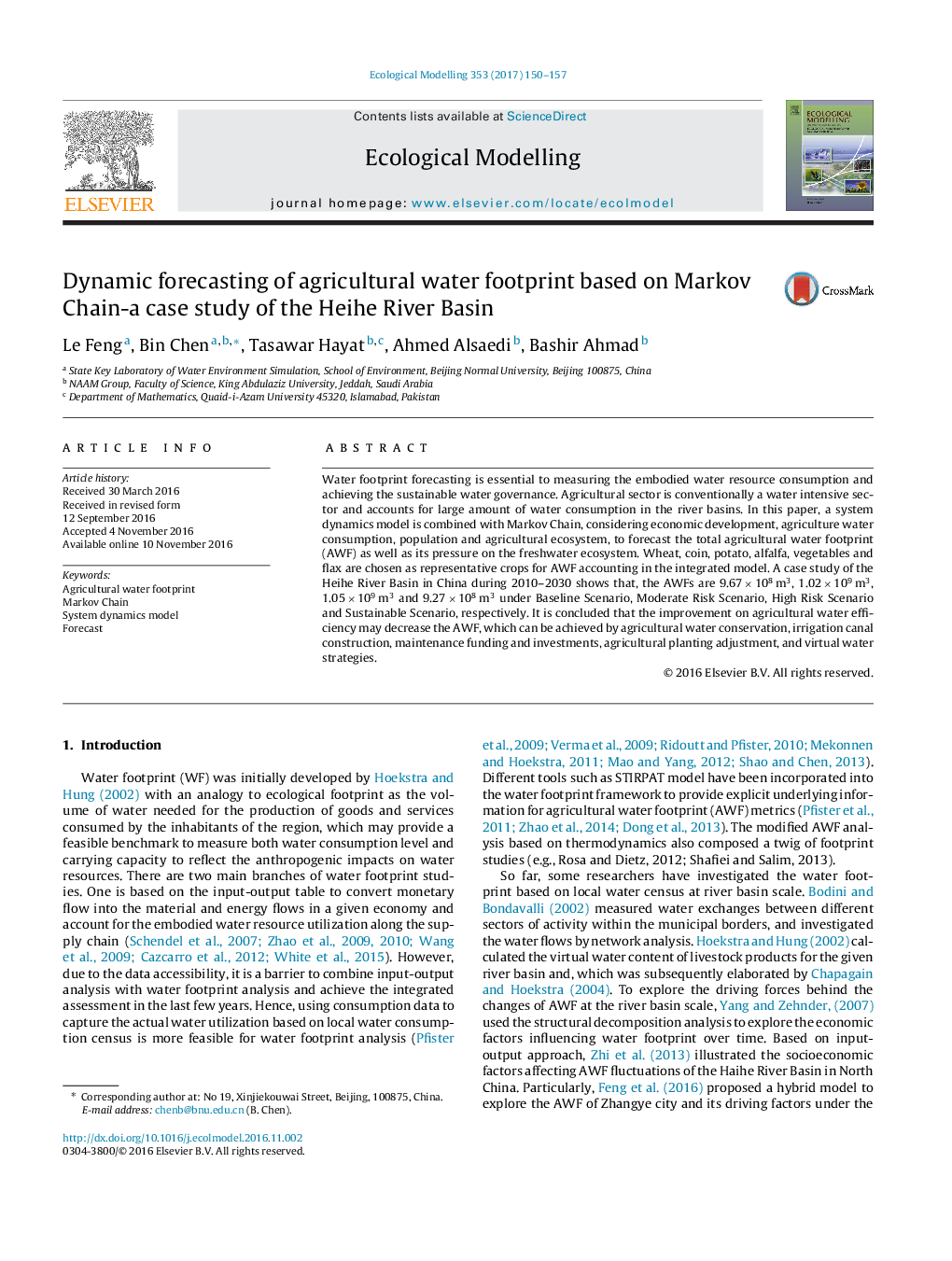| Article ID | Journal | Published Year | Pages | File Type |
|---|---|---|---|---|
| 5742175 | Ecological Modelling | 2017 | 8 Pages |
â¢The system dynamic model based on Markov process is established.â¢External key variables influencing total agricultural water footprint(AWF) are identified.â¢Feedback pathways of socioeconomic system concerning AWF in Heihe river basin are investigated.â¢Policy and suggestions for decreasing AWF under different scenarios in Heihe river basin are explored.
Water footprint forecasting is essential to measuring the embodied water resource consumption and achieving the sustainable water governance. Agricultural sector is conventionally a water intensive sector and accounts for large amount of water consumption in the river basins. In this paper, a system dynamics model is combined with Markov Chain, considering economic development, agriculture water consumption, population and agricultural ecosystem, to forecast the total agricultural water footprint (AWF) as well as its pressure on the freshwater ecosystem. Wheat, coin, potato, alfalfa, vegetables and flax are chosen as representative crops for AWF accounting in the integrated model. A case study of the Heihe River Basin in China during 2010-2030 shows that, the AWFs are 9.67Â ÃÂ 108Â m3, 1.02Â ÃÂ 109Â m3, 1.05Â ÃÂ 109Â m3 and 9.27Â ÃÂ 108Â m3 under Baseline Scenario, Moderate Risk Scenario, High Risk Scenario and Sustainable Scenario, respectively. It is concluded that the improvement on agricultural water efficiency may decrease the AWF, which can be achieved by agricultural water conservation, irrigation canal construction, maintenance funding and investments, agricultural planting adjustment, and virtual water strategies.
